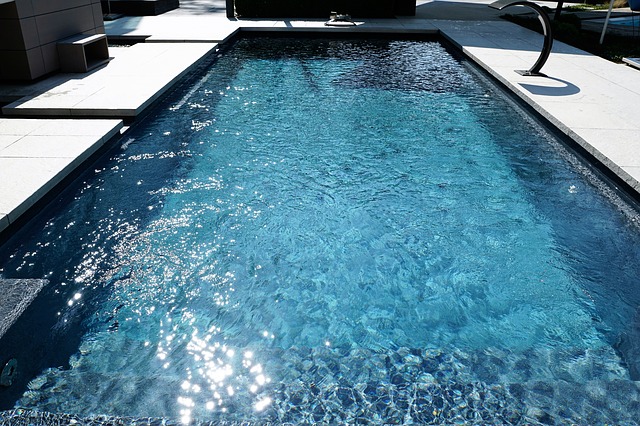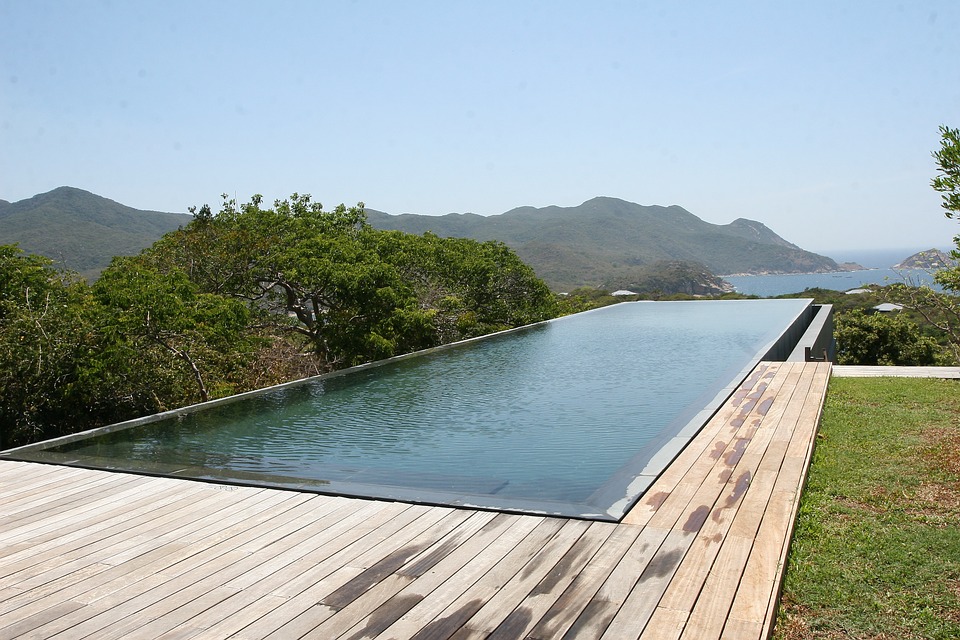Opening a swimming pool without chlorine can be tough. What you’ll learn in this post makes it much easier
Maybe you’re trying to create a more eco-friendly pool, or maybe you’re just not a fan of chlorine. Sometimes the watery eyes and dry skin can be a bit of a drag, we get it. But whatever your reason may be, you came across this post for a purpose.
You want to run a pool without using chlorine.
Well, you’ll be happy to know that it’s very doable, it just may be a little different from what you had in mind. But don’t worry, that’s what we’re explaining in this post. From using chlorine alternatives to reducing your pool’s chlorine demand altogether — we’re covering everything you need to know about opening your pool without chlorine.
If that sounds good to you, then keep reading. But before we jump into the depths of this guide, there’s a bit of information you’ll benefit from knowing ahead of time.



What you should know about opening a swimming pool without chlorine
Although we’re positive that each and every person reading this post can successfully open their pool without chlorine, it’s still important to know what comes with the decision.
Now, if your main reason for not wanting to use chlorine is related to safety or health, then that might be reason enough to reconsider. Why?
Well, chlorine is precisely what keeps your pool safe and healthy, it’s a sanitizer. And although it may seem like you need a lot of it, a pool only uses a small amount when balanced. Sure, sometimes it can irritate the skin or eyes, but that’s only when your water is out of balance.
Also, consider that forms of chlorine are found in a variety of sources that we interact with, and even consume on a regular basis. From drinking water to table salt, and even within PVC plumbing pipes.
Point being, chlorine itself is perfectly safe when used correctly. And the reason why it’s the choice of so many pool owners is because it can both sanitize your water, and oxidize contaminants. In other words, it keeps your water clean by killing existing contaminants, while quickly “deactivating” any new ones that enter the water.
Bottom line: chlorine does two very important jobs (sanitizing and oxidizing) effectively. And most chlorine alternatives either can’t do both jobs or are less effective, usually at a higher cost.
This points to the fact that although running a swimming pool without chlorine is doable, it also calls for much more work, and sometimes, more equipment. Which is what we’re explaining from this point forward.
Alternatives to traditional chlorine
If you’re not using chlorine, then you still need some kind of sanitizer to keep your pool clean.
Salt Water Chlorine Generator
A salt water chlorine generator connects to your pool system and creates natural chlorine using table salt. Through electrolysis, the generator produces a gas form of chlorine which circulates into the water.
Here are a few facts:
- Chlorine generators produce softer water
- They’re low maintenance
- They don’t make your water taste salty
Now, technically, this alternative may not count since it’s still a form of chlorine. But it should be noted that chlorine generators use a type of chlorine that’s less harsh, and much easier on the skin than traditional chlorine.
You can learn more about saltwater chlorine generators in this post: Understanding Salt Water Chlorination Systems
Bleach
This probably isn’t the first time you’ve seen bleach listed as a chlorine alternative, and that’s no accident. Although most people use bleach during laundry day, it may surprise you to know that it also doubles as a form of chlorine.
In fact, it’s practically just a lighter version of pool chlorine itself. Both chemicals contain sodium hypochlorite, the main sanitizing compound, but just at different concentrations.
While bleach contains about 6% sodium hypochlorite, pool chlorine has a concentration closer to 12%. Therefore, as a lighter and less harsh sanitizer, bleach could be the traditional chlorine alternative you’ve been searching for. Just keep in mind that you’ll need to use more of it
If you’re looking for 100% non-chlorine chemical alternatives for your pool, check out these next two suggestions
Bromine
For most pool owners seeking a true chlorine alternative, bromine is the answer.
In terms of keeping your water clean, bromine does everything that traditional chlorine does. This includes sanitization and oxidation.
Unfortunately, bromine is naturally unstable and highly reactive, which on top of reducing its effectiveness, makes it sensitive to the sun’s UV rays. So in short, bromine will keep your water clean but need replacement far more often than regular chlorine.
So in short, bromine will keep your water clean but needs replacement far more often than regular chlorine.
Biguanide
Bromine is great, but wouldn’t it be even better to have a non-chlorine sanitizer that works just as good, and lasts just as long as chlorine?
That’s essentially what biguanide is.
But the thing is, although biguanide does keep your water clean, it’s not actually a sanitizer. It’s an oxidizer, and normally, oxidizers alone are highly unstable and can’t maintain what’s known as a residual value.
But biguanide is specially designed for pool use and has an increased level of stability, which allows it to retain a residual value.
However, biguanide’s stability comes at a price: the chemical cannot be combined with TSP, ozone, detergents, or ionizers (a few solutions mentioned later in this post)
That said, both bromine and biguanide’s effectiveness fluctuates based on how much oxidizer is available. So naturally, the best way to counteract this is by reducing the chlorine, or sanitizer demand of your pool.
Equipment for reducing chlorine demand
[Dealing with chlorine lock? Here’s the solution: Cure Chlorine Demand and Prevent It For Good]
UV Generator | Ultraviolet Pool Systems



A UV generator attaches to your pool system and adds an extra layer of sanitization to water purification process. One that can reduce chlorine demand by up to 70%, which is pretty impressive. But you’re probably wondering how they work.
As water passes through the generators, all of the bacteria, microorganisms, and other contaminants floating within get exposed to high power UV light.
The UV light does two things: it reprograms the DNA of the contaminants, and it makes them incapable of multiplying
Contaminants that can’t multiply, can’t spread, which kills them off. And that, in a nutshell, is how UV generators work.
Dirty water goes in, UV-purified water comes out. And if you’re serious about running your swimming pool without chlorine, then a UV generator is a must.
Ozone Generator



Like a UV generator, an Ozone generator connects to your pool system and helps sanitize incoming water. But the actual process that an Ozone generator uses to kill contaminants is way different.
While UV lights oxidize instantly, ozone generators oxidize over a period of time. Instead of using light, ozone generators use bubbles. Yes, you read that correctly, bubbles.
The bubbles are precisely what handle the oxidization. And the longer an Ozone generator runs, the more it can oxidize.
This is because Ozone generators are most effective where they have the most exposure to your water. Which is why installing your ozone generator onto a floor return line is far more effective than using a wall line.
Mineral Sanitizer
Did you know that silver and copper have natural bacteria, algae, and contaminant killing properties?
It’s true, and it’s mainly how mineral sanitizers work. As water flows through, the sanitizer releases a steady stream of mineral ions. These ions are invisible to the naked eye but are what pack all the bacteria fighting the power.
And best of all, unlike chlorine and other sanitizers, minerals ions don’t degrade and stay consistently effective. Of course, they do need their cartridges replaced every 6 months or so.
Main takeaway: mineral sanitizers are simple, affordable, and can reduce chlorine demand by up to 50%.
Solar cover
Didn’t think you’d see a cover listed here huh?
Sure, a solar cover may not be part of your pool system or your water chemistry. But in another way, it totally is.
Allow us to explain. Using a solar pool cover:
- Reduces evaporation by up to 70%
- Improves heat retention
- Blocks harmful UV rays
Now consider that most chemical loss happens when chemicals are either burned away or gradually evaporated. And from there, you can easily deduct why using a solar cover is so advantageous.
And on that note, let’s finally summarize the process of running a chlorine-free pool.



How to open a swimming pool without chlorine
Before you begin, we recommend reading these additional guides to get a clearer understanding of the pool opening process:
And without any further ado, here’s a quick rundown of how to open/run your swimming pool without chlorine:
- Use a cover to keep the pool as clean as possible
- Create a pool care schedule from the beginning
- Inspect all of your pool equipment before turning it on:
– Pool heater
(Help: Basic Pool Heat Pump Troubleshooting)– Filter
(Help: Cartridge Filter, Sand Filter, DE Filter)– Pool pump
(Help: How To Troubleshoot Your Pool Pump) - Use a large capacity D.E filter
- Choose a sanitizer to use: bromine, biguanide, bleach
- Install your choice of sanitization equipment: UV generator, Ozone generator, Mineral Sanitizer
- Use non-chlorine shock as needed
- Test and balance water weekly
Closing Thoughts
Running a pool without chlorine takes know-how and commitment, but everyone who wants to make it happen, definitely can. It’s as simple as following the guidelines and tips we outlined in this post. But mostly, it’s important to remember that not using chlorine means compensation is needed elsewhere.
Whether that compensation comes from more rigorous pool maintenance habits of the addition of sanitization equipment, that choice is yours. What’s important is doing what matches your budget, and keeping your pool clean and safe for everyone.


